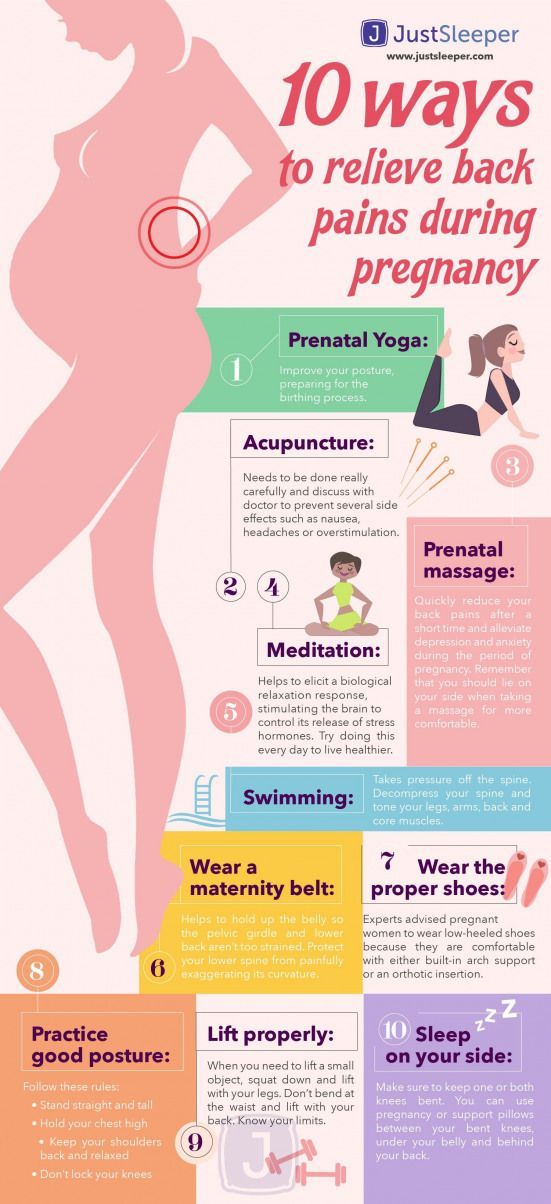Can i do yoga while pregnant
Safety Guidelines for Early Pregnancy
Practicing yoga during the first trimester allows you to carve out valuable time for yourself that you can use to get in touch with your body and emotions. You may also end up exploring the more subtle aspects of yoga relating to topics such as the chakras, meditation, or yoga nidra.
A solid yoga routine can provide physical and mental benefits that may help you navigate your pregnancy and the road beyond.
There are prenatal yoga guidelines specific to each trimester. This article will guide you through yoga poses to practice and avoid during the first trimester. You’ll also learn more about the benefits of prenatal yoga and tips for practicing safely.
It’s safe to practice yoga during the first trimester as long as you follow the safety precautions, modify as needed, and stay away from certain poses altogether.
While it’s usually OK to do most yoga poses, called asanas in Sanskrit, cultivating a less-is-more attitude is preferable to pushing yourself beyond your limits.
For the most part, you can likely keep up with your usual yoga practice or fitness routine in the first trimester. However, you may need to adjust your practice slightly and make modifications.
For example, when doing twists, choose open twists that don’t compress your belly, and twist at the level of your shoulders or upper back instead of from the base of your spine.
Instead of allowing your head to drop down during forward bends, hold your head up with your hands or props such as cushions or blocks.
During the first trimester, avoid:
- intense backbends, twists, and forward bends
- poses that involve forceful contractions or engagement of your abdominals
- poses that put lots of pressure on your belly
- inversions (unless you are highly experienced or are working closely with a qualified yoga instructor)
During the first trimester, do yoga poses that release tension, improve flexibility, and build strength. Focusing on poses that help you feel more calm, centered, and grounded may be helpful as you move through the changes of pregnancy.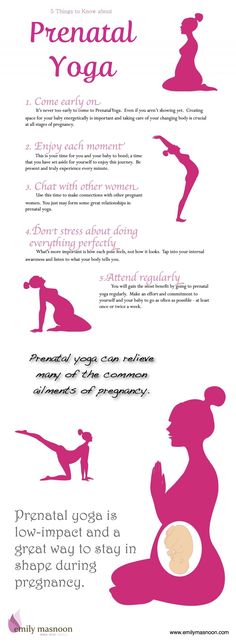
Here are a few asanas that are safe to do during the first trimester.
Vrksasana (Tree Pose)
This classic balancing pose helps build awareness of and improve alignment, posture, and balance. It builds strength in your back, core, and legs.
Tips:
- Do this pose near a wall, table, or chair for support.
- Experiment with your balance by closing your eyes partway or slowly turning your gaze toward the ceiling.
- Avoid pressing your foot into your knee.
How-to:
- From standing, shift your weight onto your left foot and lift your right foot.
- Place your right foot on the inside of your left ankle, lower leg, or thigh.
- Raise your arms overhead or push your palms together at your heart center.
- Gaze at a fixed point straight ahead.
- Stay in this position for up to 1 minute.
- Repeat on the opposite side.
Share on Pinterest
Malasana (Garland Pose or Squat)
Malasana strengthens and stretches your hips and pelvic floor muscles.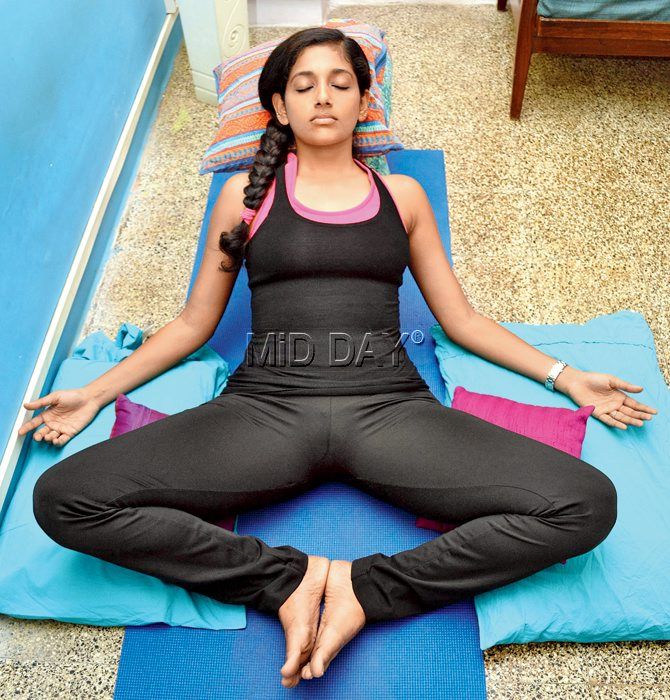 It helps elongate your spine and improves digestion.
It helps elongate your spine and improves digestion.
Tips:
- Do not do this pose if you are prone to prolapse.
- Place a block or cushion under your hips for support.
- Place a folded blanket or mat under your heels for support.
- Do this pose next to a wall or chair for balance.
How-to:
- Stand with your feet a little wider than hip-width apart.
- Turn your toes to the sides at a slight angle.
- Raise your heels or place them on the floor.
- Slowly lower your hips to come into a squat position.
- Push your palms together at your heart center.
- Push your elbows into your knees.
- Remain in this pose for up to 1 minute.
Share on Pinterest
Lunge
Lunges help elongate your spine, stretch your hips, and lengthen your thigh muscles. They also help improve alignment, balance, and posture.
Tips:
- To reduce the intensity, lower the knee of your back leg and place your hands on either side of your front foot.
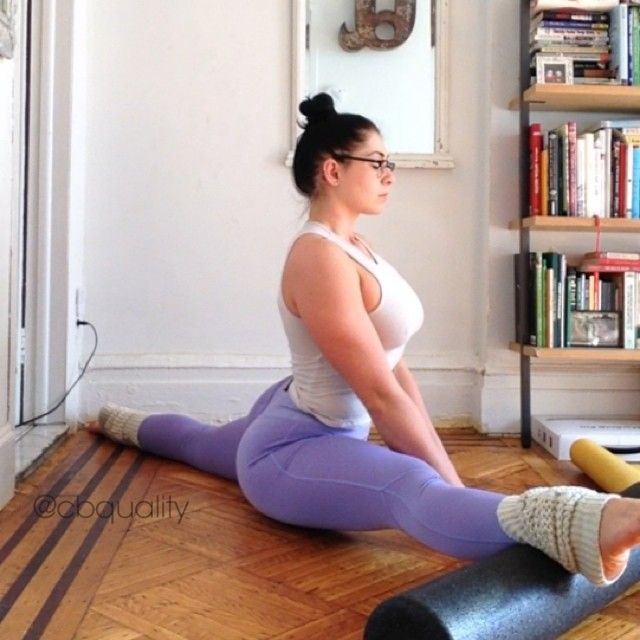
- Experiment with arm positions by interlacing your fingers behind your back or extending your arms out to the sides.
- You can also press your palms together in prayer position in front of your chest or behind your back.
How-to:
- Stand in a high lunge position with your right leg forward and your left leg back.
- Keep your back heel lifted, your back leg straight, and your hips facing forward.
- Extend your arms overhead with your palms facing inward.
- Gaze straight ahead or up toward the ceiling.
- Remain in this pose for up to 1 minute.
- Repeat on the opposite side.
Share on Pinterest
Supported Paschimottanasana (Seated Forward Bend)
This forward bend improves digestion, promotes relaxation, and helps you turn your attention inward.
Tips:
- Sit on the edge of a cushion or folded blanket.
- For support, place cushions underneath your knees.

- Stack blocks and cushions to support your chest and forehead.
How-to:
- Sit with your legs extended in front of you.
- Maintain a slight bend in your knees.
- Extend your arms overhead and elongate your spine.
- Slowly fold forward, placing your hands on your legs, your feet, or the floor.
- Stay in this pose for up to 1 minute.
Share on Pinterest
Supported Supta Baddha Konasana (Supported Reclined Bound Angle Pose)
This hip opener stretches your abdominals, pelvis, and inner thighs. It has a calming effect that helps alleviate tension and stress.
Tips:
- For support, place blocks or cushions under your thighs or knees.
- Use an eye mask to relax more deeply.
- To reduce the intensity, move your feet farther away from your hips.
How-to:
- From a seated position, bend your knees and press the soles of your feet together.

- Make an incline support using blocks and cushions, if that’s more comfortable than lying flat.
- Gently lie back, placing your arms in any comfortable position.
- Stay in this pose for up to 5 minutes.
Share on Pinterest
First trimester yoga offers several physical and mental benefits.
Physically, yoga asanas build strength, improve flexibility, and release tension. They may help reduce headaches, alleviate morning sickness, and improve digestion (1).
Yoga also has a positive effect on circulation, swelling, and inflammation (2).
Through your prenatal yoga practice, you may gain a deeper awareness of your alignment and movement patterns as you improve your overall posture, balance, and stability. This may help you adapt to the physical changes of pregnancy and your shifting center of gravity.
Yoga can help boost your energy levels while simultaneously teaching you to relax, which promotes a sense of calm and ease. It can also help improve sleep patterns and relieve anxiety and stress (3).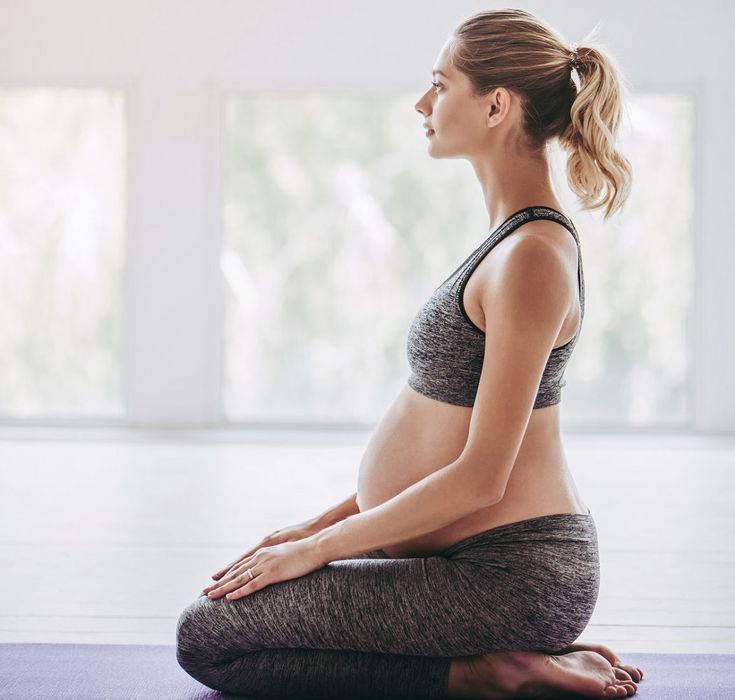
Practicing prenatal yoga can also help you prepare for birth by strengthening your pelvic muscles and improving your mental outlook. According to research, prenatal yoga may be effective in reducing labor pain and improving birth outcomes (4).
Other studies suggest that prenatal yoga may help alleviate fears related to childbirth and improve childbirth confidence (5).
Make sure you feel comfortable, supported, and at ease while practicing first trimester yoga. Along with prenatal yoga classes, you can do slow, gentle types of yoga such as Hatha, restorative, or Yin. Avoid hot yoga classes and getting overheated.
If you are taking classes online, look for a teacher who provides a contact option in case you want to ask questions, request feedback, or gain a deeper insight into your yoga routine.
Create a balanced yoga routine that includes yoga poses, meditation, and breath awareness. Listen to your body and make sure you can breathe comfortably in each asana.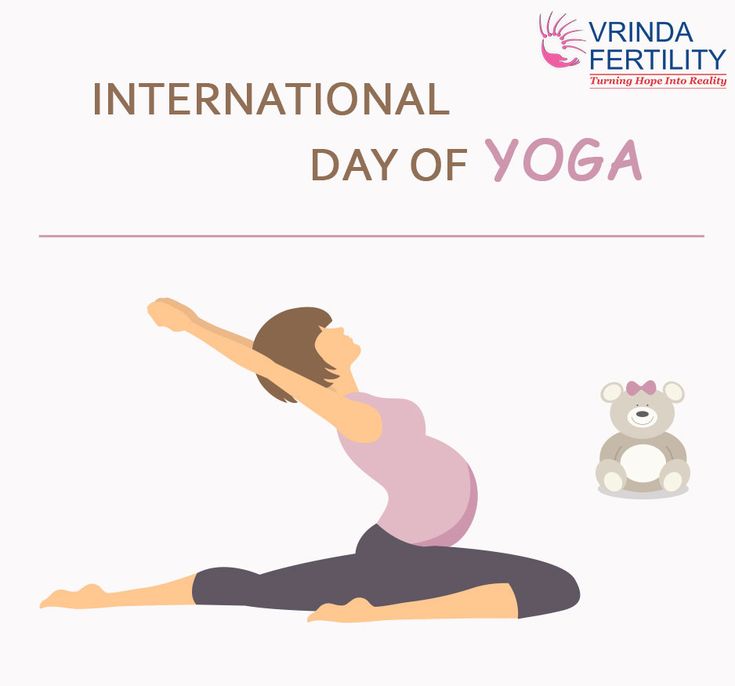 Avoid any type of forceful or retained breathing.
Avoid any type of forceful or retained breathing.
If an asana doesn’t feel right or causes discomfort, modify or replace it. You can use blocks, cushions, and straps for additional support and comfort.
Avoid pushing yourself too hard, and hold back slightly from your limit or edge.
On days when you’re too tired for a physical yoga practice, experiment with mantras, hand mudras, or yoga nidra. You may learn to develop a peaceful inner awareness and recall this stillness when life inevitably gives you challenges.
Talk with your doctor before starting a prenatal yoga routine, especially if you take medications or have medical concerns, including pregnancy complications.
Stop practicing yoga and call your obstetrician if you have (6):
- nausea
- lightheadedness or dizziness
- headache
- dehydration
- overheating
- unusual vaginal discharge, spotting, or bleeding
- chest, abdominal, or pelvic pain
- numbness
- shortness of breath before exercise
- muscle weakness
If you’re just starting your yoga journey, cultivate a wide-eyed beginner’s mindset and enjoy the process. Go slowly as you learn poses, breathing techniques, and relaxation practices. You can stay motivated to develop your yoga practice without putting pressure on yourself.
Go slowly as you learn poses, breathing techniques, and relaxation practices. You can stay motivated to develop your yoga practice without putting pressure on yourself.
Relax, take it easy, and have fun. Learn more about the elements of yoga that you find most interesting or rewarding and allow your practice to grow from there.
During the first trimester, you can safely practice yoga and enjoy its numerous physical and mental benefits. You may learn to get in touch with and balance your emotions.
If possible, seek out a skilled prenatal yoga teacher who can ensure you are practicing safely. Taking classes in a studio may provide you with a sense of community and help you meet people on a similar journey.
Most of all, stay patient and appreciative of your changing body and all it’s capable of.
Safety Guidelines for Early Pregnancy
Practicing yoga during the first trimester allows you to carve out valuable time for yourself that you can use to get in touch with your body and emotions. You may also end up exploring the more subtle aspects of yoga relating to topics such as the chakras, meditation, or yoga nidra.
You may also end up exploring the more subtle aspects of yoga relating to topics such as the chakras, meditation, or yoga nidra.
A solid yoga routine can provide physical and mental benefits that may help you navigate your pregnancy and the road beyond.
There are prenatal yoga guidelines specific to each trimester. This article will guide you through yoga poses to practice and avoid during the first trimester. You’ll also learn more about the benefits of prenatal yoga and tips for practicing safely.
It’s safe to practice yoga during the first trimester as long as you follow the safety precautions, modify as needed, and stay away from certain poses altogether.
While it’s usually OK to do most yoga poses, called asanas in Sanskrit, cultivating a less-is-more attitude is preferable to pushing yourself beyond your limits.
For the most part, you can likely keep up with your usual yoga practice or fitness routine in the first trimester. However, you may need to adjust your practice slightly and make modifications.
For example, when doing twists, choose open twists that don’t compress your belly, and twist at the level of your shoulders or upper back instead of from the base of your spine.
Instead of allowing your head to drop down during forward bends, hold your head up with your hands or props such as cushions or blocks.
During the first trimester, avoid:
- intense backbends, twists, and forward bends
- poses that involve forceful contractions or engagement of your abdominals
- poses that put lots of pressure on your belly
- inversions (unless you are highly experienced or are working closely with a qualified yoga instructor)
During the first trimester, do yoga poses that release tension, improve flexibility, and build strength. Focusing on poses that help you feel more calm, centered, and grounded may be helpful as you move through the changes of pregnancy.
Here are a few asanas that are safe to do during the first trimester.
Vrksasana (Tree Pose)
This classic balancing pose helps build awareness of and improve alignment, posture, and balance.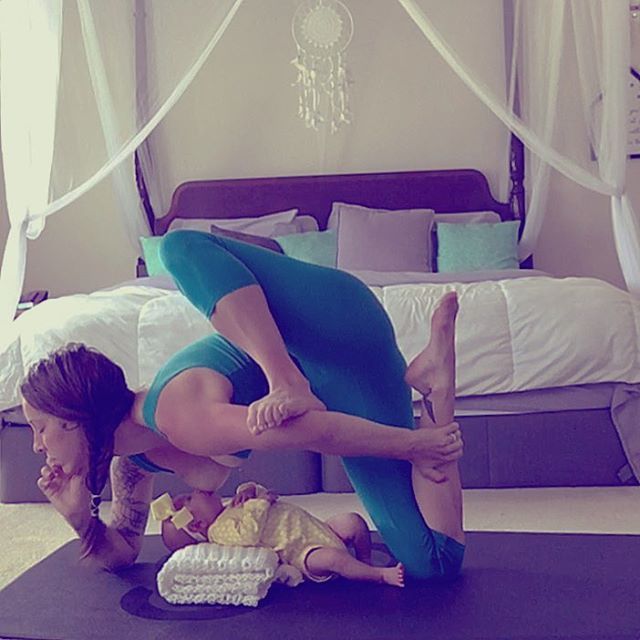 It builds strength in your back, core, and legs.
It builds strength in your back, core, and legs.
Tips:
- Do this pose near a wall, table, or chair for support.
- Experiment with your balance by closing your eyes partway or slowly turning your gaze toward the ceiling.
- Avoid pressing your foot into your knee.
How-to:
- From standing, shift your weight onto your left foot and lift your right foot.
- Place your right foot on the inside of your left ankle, lower leg, or thigh.
- Raise your arms overhead or push your palms together at your heart center.
- Gaze at a fixed point straight ahead.
- Stay in this position for up to 1 minute.
- Repeat on the opposite side.
Share on Pinterest
Malasana (Garland Pose or Squat)
Malasana strengthens and stretches your hips and pelvic floor muscles. It helps elongate your spine and improves digestion.
Tips:
- Do not do this pose if you are prone to prolapse.
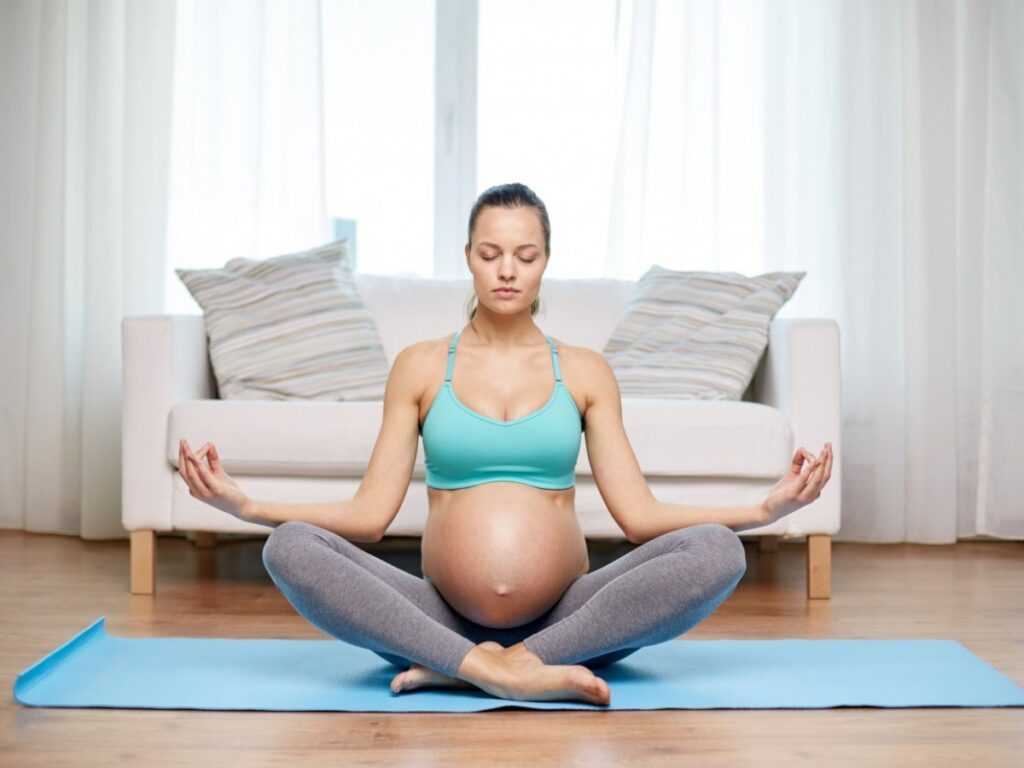
- Place a block or cushion under your hips for support.
- Place a folded blanket or mat under your heels for support.
- Do this pose next to a wall or chair for balance.
How-to:
- Stand with your feet a little wider than hip-width apart.
- Turn your toes to the sides at a slight angle.
- Raise your heels or place them on the floor.
- Slowly lower your hips to come into a squat position.
- Push your palms together at your heart center.
- Push your elbows into your knees.
- Remain in this pose for up to 1 minute.
Share on Pinterest
Lunge
Lunges help elongate your spine, stretch your hips, and lengthen your thigh muscles. They also help improve alignment, balance, and posture.
Tips:
- To reduce the intensity, lower the knee of your back leg and place your hands on either side of your front foot.
- Experiment with arm positions by interlacing your fingers behind your back or extending your arms out to the sides.

- You can also press your palms together in prayer position in front of your chest or behind your back.
How-to:
- Stand in a high lunge position with your right leg forward and your left leg back.
- Keep your back heel lifted, your back leg straight, and your hips facing forward.
- Extend your arms overhead with your palms facing inward.
- Gaze straight ahead or up toward the ceiling.
- Remain in this pose for up to 1 minute.
- Repeat on the opposite side.
Share on Pinterest
Supported Paschimottanasana (Seated Forward Bend)
This forward bend improves digestion, promotes relaxation, and helps you turn your attention inward.
Tips:
- Sit on the edge of a cushion or folded blanket.
- For support, place cushions underneath your knees.
- Stack blocks and cushions to support your chest and forehead.
How-to:
- Sit with your legs extended in front of you.

- Maintain a slight bend in your knees.
- Extend your arms overhead and elongate your spine.
- Slowly fold forward, placing your hands on your legs, your feet, or the floor.
- Stay in this pose for up to 1 minute.
Share on Pinterest
Supported Supta Baddha Konasana (Supported Reclined Bound Angle Pose)
This hip opener stretches your abdominals, pelvis, and inner thighs. It has a calming effect that helps alleviate tension and stress.
Tips:
- For support, place blocks or cushions under your thighs or knees.
- Use an eye mask to relax more deeply.
- To reduce the intensity, move your feet farther away from your hips.
How-to:
- From a seated position, bend your knees and press the soles of your feet together.
- Make an incline support using blocks and cushions, if that’s more comfortable than lying flat.
- Gently lie back, placing your arms in any comfortable position.

- Stay in this pose for up to 5 minutes.
Share on Pinterest
First trimester yoga offers several physical and mental benefits.
Physically, yoga asanas build strength, improve flexibility, and release tension. They may help reduce headaches, alleviate morning sickness, and improve digestion (1).
Yoga also has a positive effect on circulation, swelling, and inflammation (2).
Through your prenatal yoga practice, you may gain a deeper awareness of your alignment and movement patterns as you improve your overall posture, balance, and stability. This may help you adapt to the physical changes of pregnancy and your shifting center of gravity.
Yoga can help boost your energy levels while simultaneously teaching you to relax, which promotes a sense of calm and ease. It can also help improve sleep patterns and relieve anxiety and stress (3).
Practicing prenatal yoga can also help you prepare for birth by strengthening your pelvic muscles and improving your mental outlook.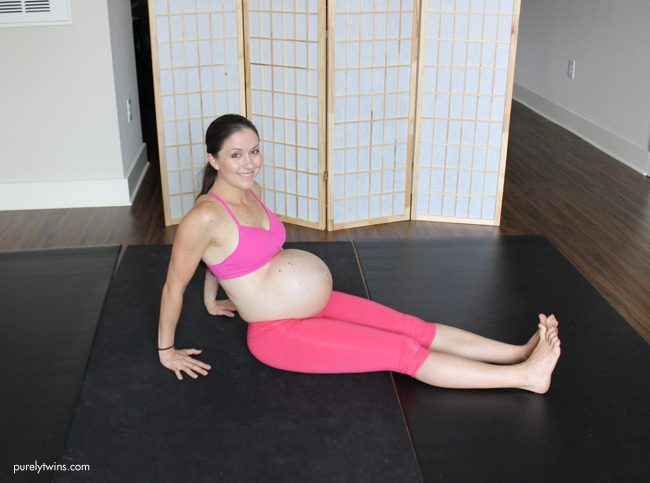 According to research, prenatal yoga may be effective in reducing labor pain and improving birth outcomes (4).
According to research, prenatal yoga may be effective in reducing labor pain and improving birth outcomes (4).
Other studies suggest that prenatal yoga may help alleviate fears related to childbirth and improve childbirth confidence (5).
Make sure you feel comfortable, supported, and at ease while practicing first trimester yoga. Along with prenatal yoga classes, you can do slow, gentle types of yoga such as Hatha, restorative, or Yin. Avoid hot yoga classes and getting overheated.
If you are taking classes online, look for a teacher who provides a contact option in case you want to ask questions, request feedback, or gain a deeper insight into your yoga routine.
Create a balanced yoga routine that includes yoga poses, meditation, and breath awareness. Listen to your body and make sure you can breathe comfortably in each asana. Avoid any type of forceful or retained breathing.
If an asana doesn’t feel right or causes discomfort, modify or replace it. You can use blocks, cushions, and straps for additional support and comfort.
Avoid pushing yourself too hard, and hold back slightly from your limit or edge.
On days when you’re too tired for a physical yoga practice, experiment with mantras, hand mudras, or yoga nidra. You may learn to develop a peaceful inner awareness and recall this stillness when life inevitably gives you challenges.
Talk with your doctor before starting a prenatal yoga routine, especially if you take medications or have medical concerns, including pregnancy complications.
Stop practicing yoga and call your obstetrician if you have (6):
- nausea
- lightheadedness or dizziness
- headache
- dehydration
- overheating
- unusual vaginal discharge, spotting, or bleeding
- chest, abdominal, or pelvic pain
- numbness
- shortness of breath before exercise
- muscle weakness
If you’re just starting your yoga journey, cultivate a wide-eyed beginner’s mindset and enjoy the process. Go slowly as you learn poses, breathing techniques, and relaxation practices. You can stay motivated to develop your yoga practice without putting pressure on yourself.
You can stay motivated to develop your yoga practice without putting pressure on yourself.
Relax, take it easy, and have fun. Learn more about the elements of yoga that you find most interesting or rewarding and allow your practice to grow from there.
During the first trimester, you can safely practice yoga and enjoy its numerous physical and mental benefits. You may learn to get in touch with and balance your emotions.
If possible, seek out a skilled prenatal yoga teacher who can ensure you are practicing safely. Taking classes in a studio may provide you with a sense of community and help you meet people on a similar journey.
Most of all, stay patient and appreciative of your changing body and all it’s capable of.
Yoga for pregnant women in trimesters: what you need to know?
Administrator Reading time 10 minutes
Article content:
The period of bearing a child is the most beautiful and responsible time for a woman.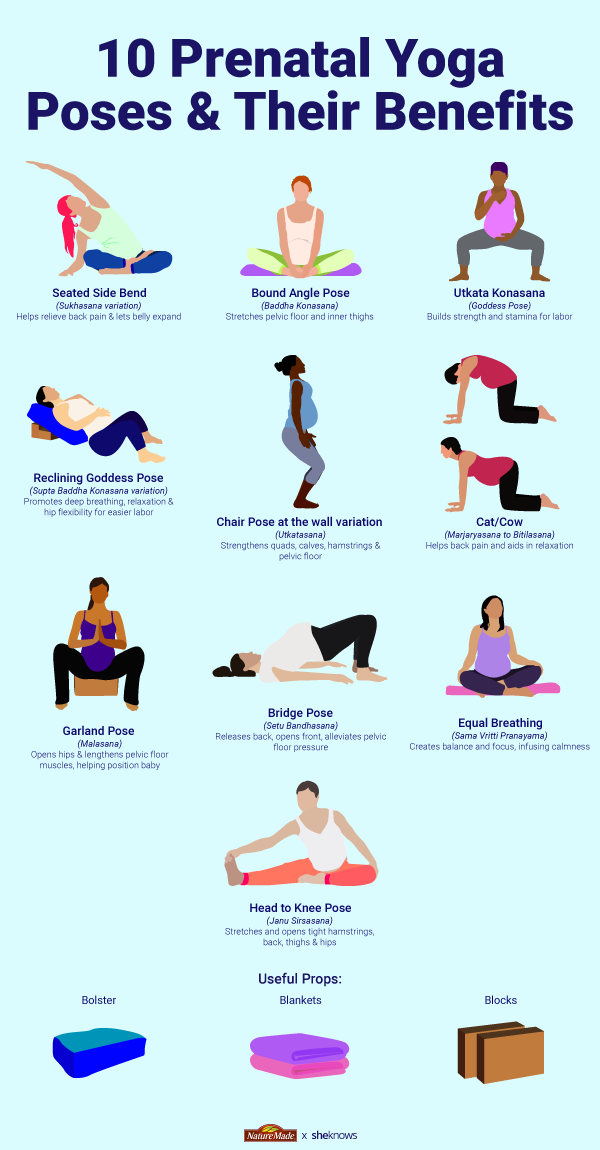 All nine months, the expectant mother must take care not only of her well-being, but also of the health of her baby. Although a pregnant woman feels a kind of discomfort, physical inconvenience, the time of waiting for a baby is a bright and happy period of life.
All nine months, the expectant mother must take care not only of her well-being, but also of the health of her baby. Although a pregnant woman feels a kind of discomfort, physical inconvenience, the time of waiting for a baby is a bright and happy period of life.
Doctors recommend that pregnant women do yoga. This is a great way to find physical and mental balance. A woman will learn to feel and her future baby.
Training Tips and Practice Tips
Yoga is a great way to improve your well-being. Asanas (body positions, exercises) will help to avoid health problems.
Before starting classes, a pregnant woman should consult a doctor from the antenatal clinic. If there are no contraindications (uterine hypertonicity, toxicosis), you can safely spread the rug and prepare the body for future stress during childbirth. A pregnant girl should practice yoga under the guidance of a trainer. It is worth telling your doctor about all the details of the classes (postures, body reactions to exercises). Closer to the date of birth, the load on the body decreases, and the list of acceptable asanas is reduced.
Closer to the date of birth, the load on the body decreases, and the list of acceptable asanas is reduced.
Important! A pregnant girl should practice yoga under the guidance of a trainer.
Recommendations.
Yoga comes in many forms. Expectant mothers do yoga for pregnant women. This type of yoga is different from classical exercises, accompanied by less physical activity.
Yoga is both physical and mental preparation. Women train their back muscles, which is very important in late pregnancy. At the same time, they give birth easier, without injuries and ruptures. Meditative techniques have a positive effect on the opening of the lungs, provide a constant supply of oxygen.
Mood improves after exercise. Exercise can help prevent postpartum depression. Inverted asanas will help the fetus to be placed correctly in the womb.
A feature of yoga for pregnant women is the ability to find balance and comfort in the most difficult poses. Centuries-old Indian traditions will help you learn how to breathe correctly. This practice will come in handy during fights.
Centuries-old Indian traditions will help you learn how to breathe correctly. This practice will come in handy during fights.
Classes will be aimed at strengthening the spine and joints, because the load on them will increase every day. Back exercises increase blood circulation in the pelvic area. The change of positions is slow and smooth. Aerobics, sudden movements and jumps are absent.
Experts recommend doing breathing exercises several times a day without the help of an instructor at home. Breathing exercises will prevent hypoxia of the newborn, reduce pain, and become a useful skill during the birth itself.
Forbidden asanas:
- twist;
- forward bends;
- postures with prone position;
- exercises for the press;
- backward bends from a prone position;
- jumping, sudden movements.
A pregnant woman who has been practicing yoga for more than one year should in no case perform complex exercises.
The main task is to help the body adjust to a new way of life.
Features of yoga classes at different stages of pregnancy
Since physical activity is prohibited for pregnant women, it is worth looking for other options for keeping the body in shape. Yoga classes in any trimester will bring the body into tone, protect against stress and emotional disorders.
Yoga for pregnant women will be a useful pastime. It is useful at any time. On the benefits of this sport, you can watch videos on the Internet. The main condition is the absence of contraindications, otherwise it is better to start classes from the second trimester.
The 1st trimester is associated with an unbalanced emotional state of the pregnant woman. Training will bring positive emotions and pleasure from the time spent in the gym. For this period, the “kitty”, “lotus”, “tree” poses are suitable. Each exercise is performed for 10 seconds.
The 2nd trimester is the best period of pregnancy. The body is accustomed to its new state. Yoga classes should be directed to strengthening the general physical condition. Instructors recommend avoiding complex strenuous exercises.
The body is accustomed to its new state. Yoga classes should be directed to strengthening the general physical condition. Instructors recommend avoiding complex strenuous exercises.
Poses for pregnant women:
- asana "kitty" - will strengthen the spine and unload the kidneys;
- "hero" pose (virasana) - improves posture and strengthens the back muscles;
- pose "butterfly" (konasana) - will increase blood circulation in the pelvic area, stimulates the bladder, will benefit the uterus;
- pose "mountains" (tadasana) - contributes to the enrichment of the body with energy.
The 3rd trimester is the hardest time. A round belly does not allow you to move easily and quickly. Instructors make the main emphasis on a set of exercises that develop breathing (pranayama). A pregnant woman should imagine how the inhaled air flows throughout the body, enriches it with oxygen, improves well-being.
Yoga is a useful occupation for a pregnant woman. For training to be successful, you must follow the advice of doctors and instructors.
For training to be successful, you must follow the advice of doctors and instructors.
pregnancy group training yoga workouts
Yoga for pregnant women: what subtleties a future mother should know
Yoga for pregnant women. Special program for women, starting from the first month of pregnancy
A woman can start a special program starting from the first month, as soon as she finds out about her pregnancy. If there are any complications and health problems, there were miscarriages, then it is especially important to study in a special class under the guidance of an experienced teacher.
If it is not possible to attend class for expectant mothers , come to class female , having warned the teacher. If you are going to attend a general class, then choose a woman teacher, and be sure to let her know about your condition before the lesson.
Pay close attention to how you feel during the session, and if you experience any discomfort, exit the pose.
In general, practice during pregnancy is fundamentally different from usual. The very message for practicing is different - without full dedication and striving for the intensity of the pose.
During pregnancy, you can and should do inverted positions, as they normalize hormonal balance. During menstruation, these asanas are not performed, but during pregnancy they are mandatory.
Inverted postures are useful to include in practice from the first to the last day. True, in the last days of pregnancy, some asanas have to be abandoned, since doing them becomes physically very difficult or uncomfortable. One such posture is the Headstand.
But Viparita Karani Mudra (Bent Candle Pose) can be performed until victory. Sitting and supine postures such as Baddha Konasana and Supta Baddha Konasana can also be practiced throughout pregnancy. They help to increase the space between the pelvis and the diaphragm, thereby making it easier to breathe and improve overall well-being. But we must remember that many women already in the second trimester begin to experience discomfort in the supine position. Therefore, such postures as Supta Baddha Konasana are performed mainly in a half-sitting-reclining position, with support under the back. You can also do passive backbends, such as Viparita Dandasanu on a special bench or bolster. In the second and third trimesters, it is very good to include standing postures in your practice. It is advisable to perform them at the support. Standing postures help control weight, strengthen the body as a whole, develop self-confidence, reduce the likelihood of cramps and swelling, improve blood supply to the fetus, and keep the spine healthy and strong. You can also do soft twists, such as Bharadvajasana on a chair.
But we must remember that many women already in the second trimester begin to experience discomfort in the supine position. Therefore, such postures as Supta Baddha Konasana are performed mainly in a half-sitting-reclining position, with support under the back. You can also do passive backbends, such as Viparita Dandasanu on a special bench or bolster. In the second and third trimesters, it is very good to include standing postures in your practice. It is advisable to perform them at the support. Standing postures help control weight, strengthen the body as a whole, develop self-confidence, reduce the likelihood of cramps and swelling, improve blood supply to the fetus, and keep the spine healthy and strong. You can also do soft twists, such as Bharadvajasana on a chair.
Now about what you absolutely cannot do. During the entire duration of pregnancy, backbends from a lying position on the floor (such as Shalabhasana), complex balances (such as Bakasana), closed twists (such as Marichiasana III) and abdominal poses (such as Navasana) should not be done. In addition, jumping must be excluded from classes.
In addition, jumping must be excluded from classes.
In all asanas where we usually join the legs together, such as Dandasana, including inverted poses, the feet should be spread apart to the width of the pelvis. In the second and third trimesters, deep forward bends should not be performed. These poses should look more like stretching up while sitting. Shavasana during this period is best performed lying on the left side. As far as pranayama is concerned, simple variations of Ujjaya and Viloma can be performed in a reclining position on a support or sitting.
Special care must be taken at 12, 13 and 14 weeks of pregnancy. During this period, only supine and inverted postures should be included in the practice. The program should be as soft as possible, since during this period hormonal changes occur in the body.
General information for self-practice when there is no abundance of materials:
- perform all standing poses with support, use a wall instead of a horse.